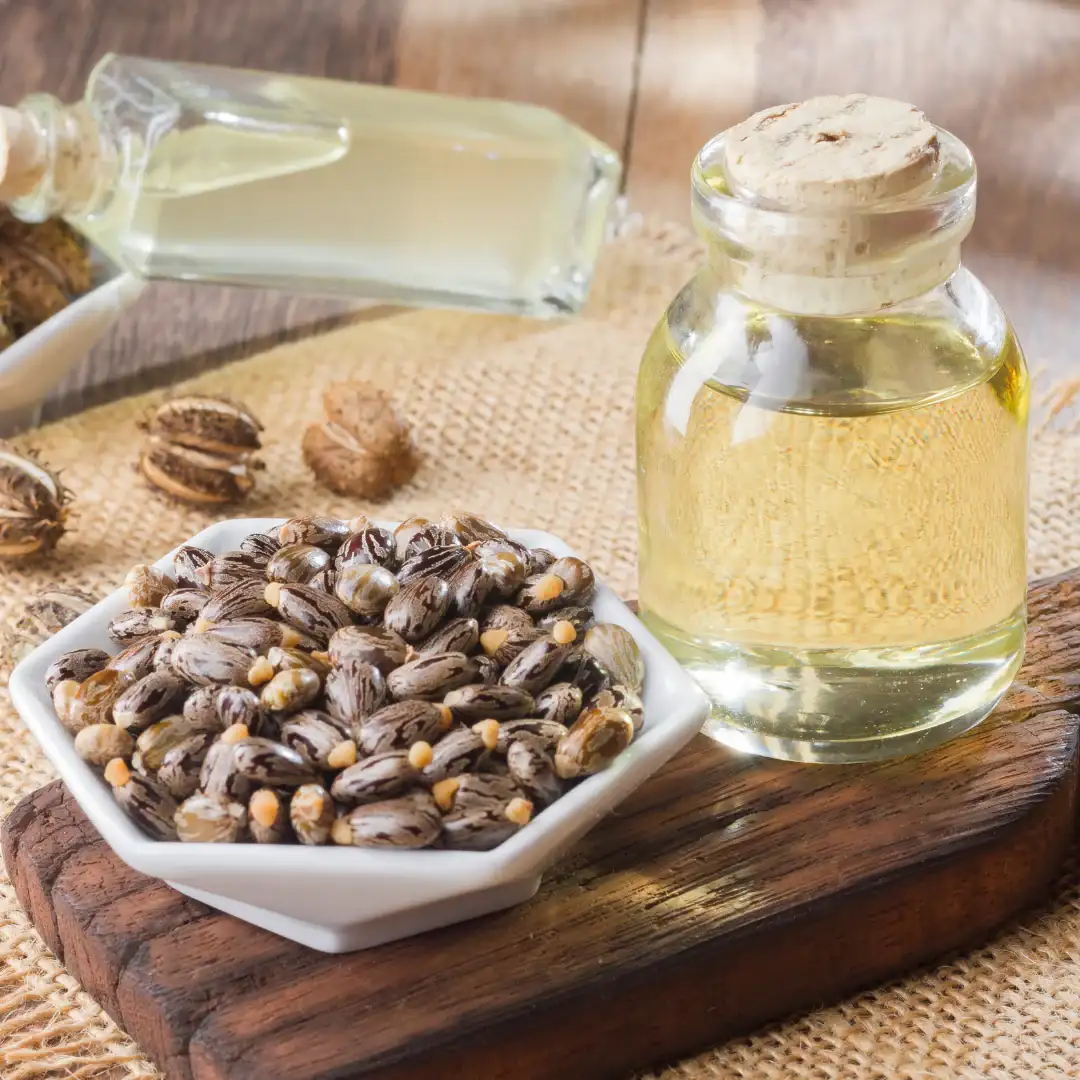| Specifications |
Details |
| Source |
Ricinus communis (Castor Bean) |
| Family |
Euphorbiaceae |
| Color |
Pale Yellow |
| Texture |
Viscous Liquid |
| Uses |
Medicinal, Industrial, Cosmetics |
| Composition |
Mainly Ricinoleic Acid, Oleic Acid, Linoleic Acid |
| Extraction Method |
Cold Pressed or Solvent Extracted |
| Origin |
Native to Africa and India |
| Storage |
Store in a cool, dark place |
Castor oil is a vegetable oil derived from the seeds of the castor plant, scientifically known as Ricinus communis. The plant is native to Africa and has spread to various regions around the world.
Castor oil has been used for centuries for various purposes, including medicinal, industrial, and cosmetic applications. Castor oil is typically pale yellow to colorless. It has a thick and viscous consistency, which sets it apart from many other vegetable oils.
Castor oil has a mild, distinctive odor. The main component of castor oil is ricinoleic acid, a unique fatty acid that makes up about 90% of the oil. Other fatty acids present in castor oil include oleic acid, linoleic acid, stearic acid, and palmitic acid.
Castor oil has been used traditionally as a laxative due to its ability to stimulate bowel movements. Some people use castor oil topically for various skin conditions, such as dry skin, acne, and dermatitis. Castor oil is a common ingredient in cosmetic and personal care products like soaps, creams, and lotions.
Some people use castor oil for eyelash and eyebrow growth. While castor oil is generally safe for external use, it should be used with caution internally due to its strong laxative effects. Allergic reactions to castor oil are rare, but individuals with known allergies should perform a patch test before using it extensively.




